Hard water was wreaking havoc in my San Antonio home—limescale on faucets, dry skin, and appliances that seemed to age faster than me. I needed a solution, and after researching, I landed on Alamo Water Softeners.
Their systems are tailored for our region’s tough water, promising softer laundry, shinier dishes, and happier pipes. With glowing reviews and a reputation for stellar service, I was sold. You should consider one too—it’s a game-changer for your home and peace of mind.
Let me share my journey and why it’s worth your attention.
My Experience With Alamo Water Softeners
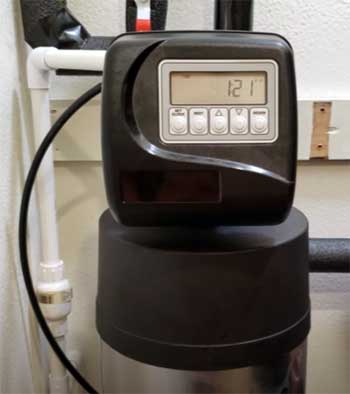
When I moved to San Antonio, I wasn’t prepared for the battle with hard water.
The first clue was the chalky residue on my glassware, followed by my hair feeling like straw after every shower.
My dishwasher seemed to be on its last legs, and the plumber warned that mineral buildup was the culprit.
I knew I needed a water softener, but the options were overwhelming.
After reading reviews and talking to neighbors, I called Alamo Water Softeners.
Their rep, David, showed up right on time, which was a relief after dealing with flaky contractors. He tested my water, confirmed it was “very hard” at 15 grains per gallon (gpg), and walked me through their CareSoft Elite RC® system.
No pushy sales pitch—just clear explanations about how it tackles calcium and magnesium, the main culprits behind my water woes.
The installation was seamless. Two technicians arrived, and within two hours, my garage had a sleek, compact unit humming away. They even rerouted pipes to ensure I had unsoftened water for my garden—an unexpected touch that saved my plants from sodium exposure.
Post-installation, the difference was immediate. My skin felt smoother, my laundry softer, and my coffee tasted better (yes, water matters!). A month later, Alamo followed up to check the system and test my water again, which now read a perfect 0 gpg.
That kind of service stuck with me. Sure, there was a hiccup with a slightly noisy regeneration cycle at first, but a quick call to their team fixed it with a minor adjustment. My experience felt personal, like they genuinely cared about my home’s water quality.
What stood out was their local expertise. Living in South-Central Texas, where water is notoriously hard, I needed a system built for these conditions. Alamo’s team knew exactly what I was dealing with—high mineral content from local wells and city supplies.
They didn’t just sell me a product; they solved a problem specific to my area. It’s been six months, and I’m still thrilled with the results. My appliances are running smoothly, and I’m not scrubbing limescale off my faucets every week. If you’re in a hard-water area like mine, Alamo’s worth a serious look.
Pros of Alamo Water Softeners
- Tailored for Texas Hard Water
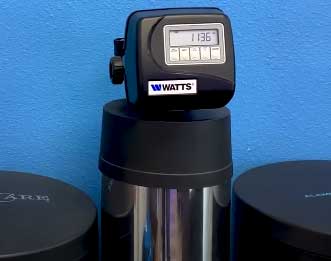
Living in San Antonio, you’re probably no stranger to hard water. Alamo’s systems, like the CareSoft Elite RC®, are designed with our region’s water in mind.
The water here can hit 12-18 gpg, packed with calcium and magnesium that clog pipes and dull your hair.
Alamo’s ion-exchange technology swaps those minerals for sodium or potassium, leaving you with soft water that feels like a luxury. Their split-tank design, combining high-performance media and activated carbon, tackles not just hardness but also chlorine and other impurities.
It’s like having a custom shield against Texas water woes. My dishes sparkle, and my pipes are thanking me.
- Exceptional Customer Service
From my first call to the follow-up visit, Alamo’s team was top-notch. David, my sales rep, didn’t just sell—he educated me on water pressure, mineral content, and system sizing. The installers were punctual, cleaned up after themselves, and even explained how to check the salt levels.
When I had a question about a weird noise during regeneration, their technician was at my house within 24 hours. Reviews on Angi and Yelp echo this—customers rave about reps like Kenny and Trevor who go the extra mile.
Alamo’s not just selling a product; they’re building trust, which is rare these days.
- Long-Lasting Systems
Alamo claims their softeners last 20-30 years with proper care, and I believe it. The build quality feels solid, not like some flimsy units I’ve seen. Their systems use durable resin beads and high-quality valves, like the Clack WS-1, which are known for reliability.
A friend of mine has had his Alamo system for over a decade with zero issues, and online reviews back this up. On Reddit, users mention systems running smoothly for years, with only routine salt refills needed.
Investing in something that won’t need replacing in five years feels like a win.
- Eco-Friendly Features
I was worried about water waste, but Alamo’s systems are surprisingly efficient. The CareSoft Elite RC® uses a metered regeneration system, meaning it only regenerates when necessary, based on your water usage. This cuts down on salt and water waste compared to older, timer-based models.
In my house, it regenerates about once a week, using roughly 20 gallons per cycle—way less than the 50-120 gallons some cheaper models guzzle. Plus, their carbon filtration reduces chlorine, so my drinking water tastes cleaner without needing a separate filter.
- Space-Saving Design
My garage isn’t exactly spacious, so I was thrilled that Alamo’s cabinet-style units are compact. The RHS32 model I got fits neatly in a corner, combining the resin and brine tanks in one sleek package.
Unlike bulky dual-tank systems, it doesn’t eat up space, which is a lifesaver if you’re in a condo or smaller home. The design also simplifies maintenance—no wrestling with separate tanks to check salt levels. It’s practical, and I appreciate that Alamo thought about real-world use.
Not-So-Good Parts of Alamo Water Softeners
- Initial Cost Can Sting

Let’s talk money. Alamo’s systems aren’t cheap.
My whole-house softener, plus a reverse osmosis (RO) system for drinking water, set me back about $2,500, including installation.
While that’s competitive compared to brands like RainSoft (which quoted me $7,500!), it’s still a chunk of change.
If you’re on a tight budget, the upfront cost might make you wince.
That said, Alamo’s pricing is transparent—no hidden fees—and they offer financing options, which helped me spread out the payments. Still, it’s an investment you’ll feel at first.
- Maintenance Isn’t Zero
Don’t get me wrong—Alamo’s systems are low-maintenance compared to some, but they’re not set-it-and-forget-it. You’ll need to refill the salt tank every 4-6 weeks, depending on usage. For me, that’s about 40 pounds of salt, which costs $10-15 a bag.
If you forget, your system won’t soften effectively, and you’ll notice the hard water creeping back. Also, the regeneration cycle can be noisy—mine sounded like a small dishwasher at first, though a technician adjusted it.
If you’re not handy, you might rely on Alamo’s service team for annual checkups, which can add $100-200 yearly.
- Mixed Follow-Up Experiences
While my follow-up visit was great, not everyone’s had the same luck. Some Angi reviews mention missed appointments or delays in scheduling follow-ups. One customer was frustrated after waiting weeks for a post-installation check, and another said they never got a call back after reporting an issue.
In my case, Alamo was responsive, but it seems their busy schedule can lead to occasional dropped balls. If you’re someone who values flawless communication, this could be a minor annoyance.
- Sodium Concerns for Some
Alamo’s salt-based systems add small amounts of sodium to your water, which is fine for most people but a concern if you’re on a low-sodium diet. My RO system filters this out for drinking water, but not everyone opts for that add-on.
If sodium’s an issue, you might need to pair the softener with an RO system or consider a salt-free conditioner, which Alamo doesn’t specialize in. It’s not a dealbreaker, but it’s worth considering if health is a priority.
Maintenance Tips For Your Alamo Water Softener
- Keep the Salt Tank Full

Your Alamo softener needs salt to work its magic.
Check the brine tank monthly and keep it at least one-third full with high-quality water softener salt (avoid table salt—it can clog the system).
I use diamond crystal pellets, which dissolve cleanly.
If you notice a “salt bridge” (a hard crust forming at the top), break it up with a broom handle. This keeps the system regenerating properly and ensures you’re getting soft water. Pro tip: Set a calendar reminder to check it, so you don’t forget.
- Clean the Resin Tank Annually
The resin beads in your softener do the heavy lifting, trapping calcium and magnesium. Over time, they can get gunked up with sediment or iron. Alamo recommends cleaning the resin tank once a year.
You can do this yourself with a resin bed cleaner (about $15 at hardware stores) or call their service team. I tried it myself—followed the manual, flushed the system, and it was easier than I expected. Regular cleaning extends the resin’s life, saving you from costly replacements down the line.
- Monitor Water Pressure
High water pressure can stress your softener, as I learned from my rep, Kenny. He found my home’s pressure was over 100 psi—way too high. Alamo installed a pressure regulator, and I check it every few months with a $10 gauge from Home Depot.
Keep pressure between 40-80 psi to avoid damaging the system. If you notice a drop in water flow, it might be a clogged filter or valve, so call Alamo’s team to troubleshoot.
- Schedule Annual Checkups
Alamo offers maintenance plans, but even if you skip those, book a professional checkup yearly. They’ll test your water hardness, inspect valves, and ensure the system’s running efficiently. My technician caught a small leak in a valve during my last visit, saving me from bigger issues.
If you’re DIY-savvy, you can test hardness yourself with strips (Alamo includes one with purchase), but a pro’s eye catches things you might miss.
- Flush the System After Long Absences
If you’re away for weeks, like I was for a summer trip, flush the system when you return. Stagnant water in the resin tank can breed bacteria. Run a manual regeneration cycle (your manual shows how) and let water flow through your faucets for 10 minutes.
This keeps your system fresh and your water clean. I noticed a slight odor after my trip, but flushing fixed it right away.
Comparison of Alamo Water Softener with Other Brands
I compared Alamo’s CareSoft Elite RC® with Novo’s ClearWater Pro, Hague’s WaterMax, and Sterling’s SM-Series to see how they stack up. Here’s how they fare in key areas, based on my research and experience.
- Alamo Vs. Novo
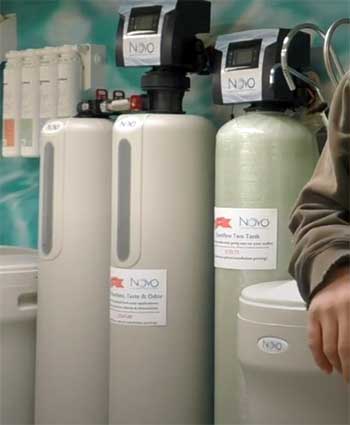
Alamo’s CareSoft Elite RC® tackles San Antonio’s hard water (12-18 gpg) with ion-exchange and carbon filtration, removing chlorine for better-tasting water.
Its metered regeneration saves water, using about 20 gallons per cycle.
Novo’s ClearWater Pro also uses ion-exchange but skips the carbon filter, so you might need an extra system for taste.
Novo’s systems cost $1,200-$2,800, slightly cheaper than Alamo’s $1,500-$3,000, but installation fees can vary, per Reddit feedback.
Alamo’s local service and all-in-one filtration make it my pick for Texas homes, though Novo’s a solid budget option.
- Alamo Vs. Hague
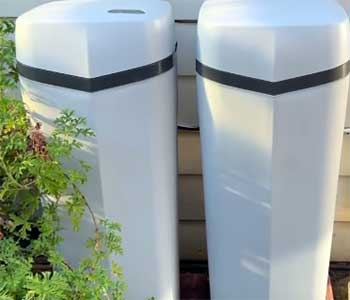
Alamo’s system is straightforward and efficient, with a compact design and Clack WS-1 valves built for 20-30 years.
Hague’s WaterMax uses a compartmentalized resin tank, great for high-iron water, but it’s complex and costs $3,500-$5,000—double Alamo’s price for my setup.
Hague’s proprietary parts tie you to their service network, which some Yelp users found limiting.
Alamo’s professional installation and responsive local team felt more reliable for my needs.
Hague’s advanced tech suits specific water issues, but Alamo’s balance of performance and cost wins for most households.
- Alamo Vs. Sterling
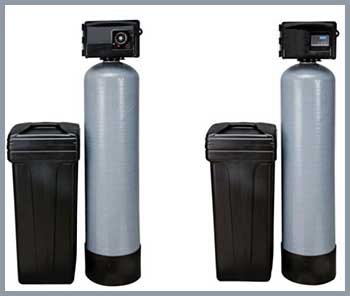
Alamo’s metered system and durable build make maintenance a breeze, with only annual resin cleaning and salt refills needed.
Sterling’s SM-Series, priced at $800-$1,500, is a DIY favorite but uses timer-based regeneration, wasting 50-100 gallons per cycle.
Installation can be tricky without plumbing skills, unlike Alamo’s seamless setup.
Sterling’s valves are less robust, and some users report resin issues after a decade.
For budget-conscious DIYers, Sterling’s tempting, but Alamo’s efficiency and local support make it worth the extra cost for a hassle-free experience.
Frequently Asked Questions (FAQ)
Alamo offers a 10-year warranty on most of their water softener systems, covering parts and labor for manufacturing defects. Some components, like the control valve, may have a shorter five-year warranty. Check with their team for specifics, as warranties can vary by model. My CareSoft Elite RC® came with a clear warranty document, and Alamo’s team was upfront about what’s covered. Always keep your purchase records handy for claims.
Renting a water softener can make sense if you’re not ready to commit to buying or if you’re in a temporary home. Rentals, often $20-$50 a month, include maintenance and repairs, so you’re not on the hook for upkeep. However, over time, renting can cost more than buying outright—my $2,500 system would take about five years to match in rental fees. For long-term homeowners like me, buying an Alamo system was the better deal. Rent if you need flexibility; buy if you’re staying put.
The average cost for a whole-house water softener system ranges from $1,000 to $3,000, including installation. Basic models, like Fleck’s 5600, can dip to $500 if you DIY, while premium brands like Kinetico can hit $6,000. Alamo’s systems typically fall in the $1,500-$3,000 range, depending on size and add-ons like RO. My system, with installation and an RO unit, was $2,500—fair for the quality and service. Costs vary based on home size, water hardness, and plumbing needs.
Some areas in the U.S. have restrictions on salt-based water softeners due to environmental concerns about salty wastewater. California has the most widespread bans, with cities like Santa Clarita and parts of Los Angeles County prohibiting new installations. Other states, like Texas, Arizona, and Michigan, have local restrictions in water-scarce areas. No statewide bans exist in Texas, so my Alamo system is fine in San Antonio. Check local regulations before buying, as rules vary by municipality.
Why Alamo Water Softeners Are A Must-Have?
After six months with my Alamo water softener, I can’t imagine going back to hard water. The softer laundry, cleaner dishes, and longer-lasting appliances make it worth every penny. Alamo’s local expertise, reliable systems, and stellar service set them apart in a crowded market.
If you’re tired of limescale and dry skin, get an Alamo system—you won’t regret it. It’s an investment in your home’s comfort and longevity, tailored to tackle Texas water like a pro. Call them today and see the difference for yourself.
